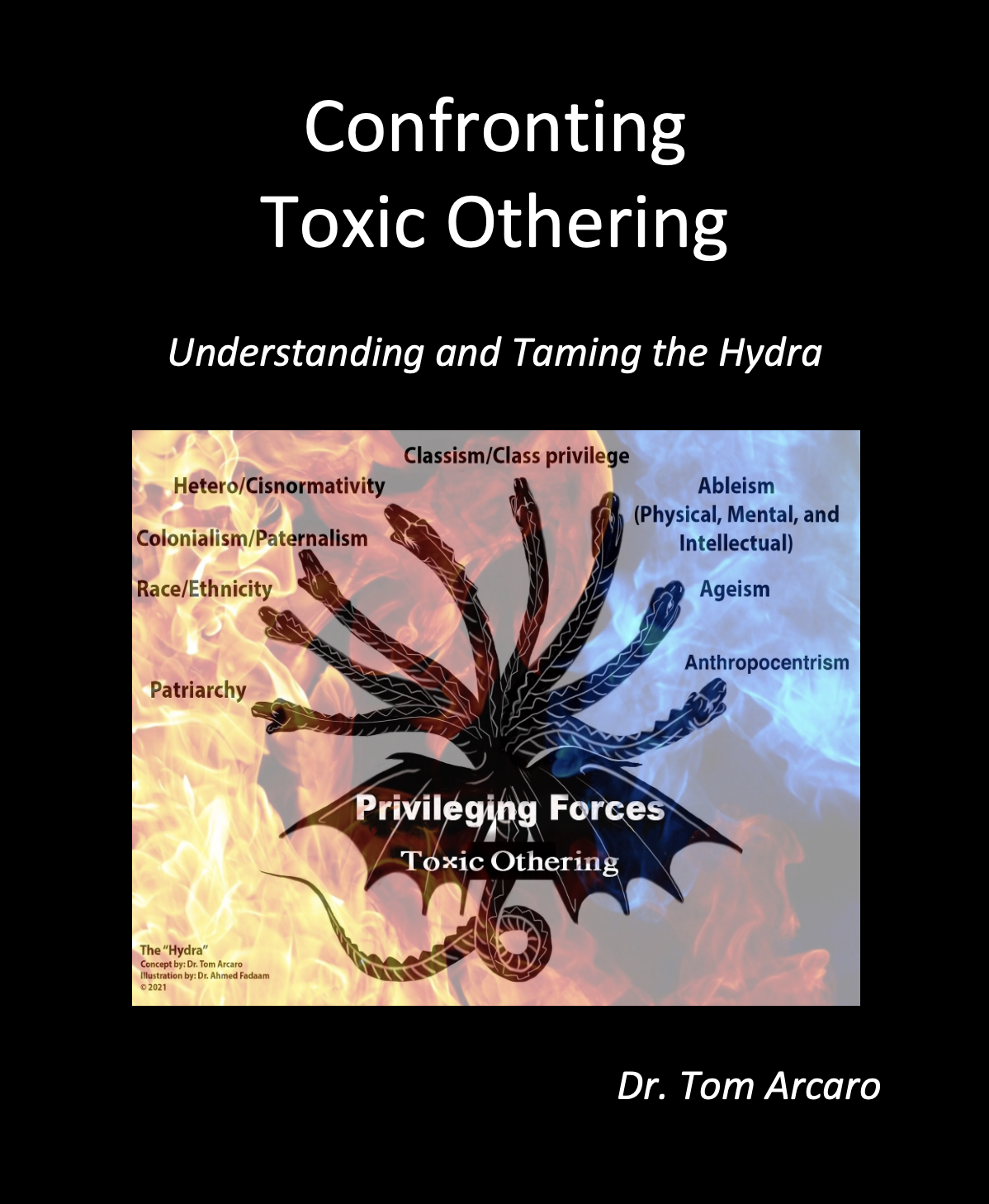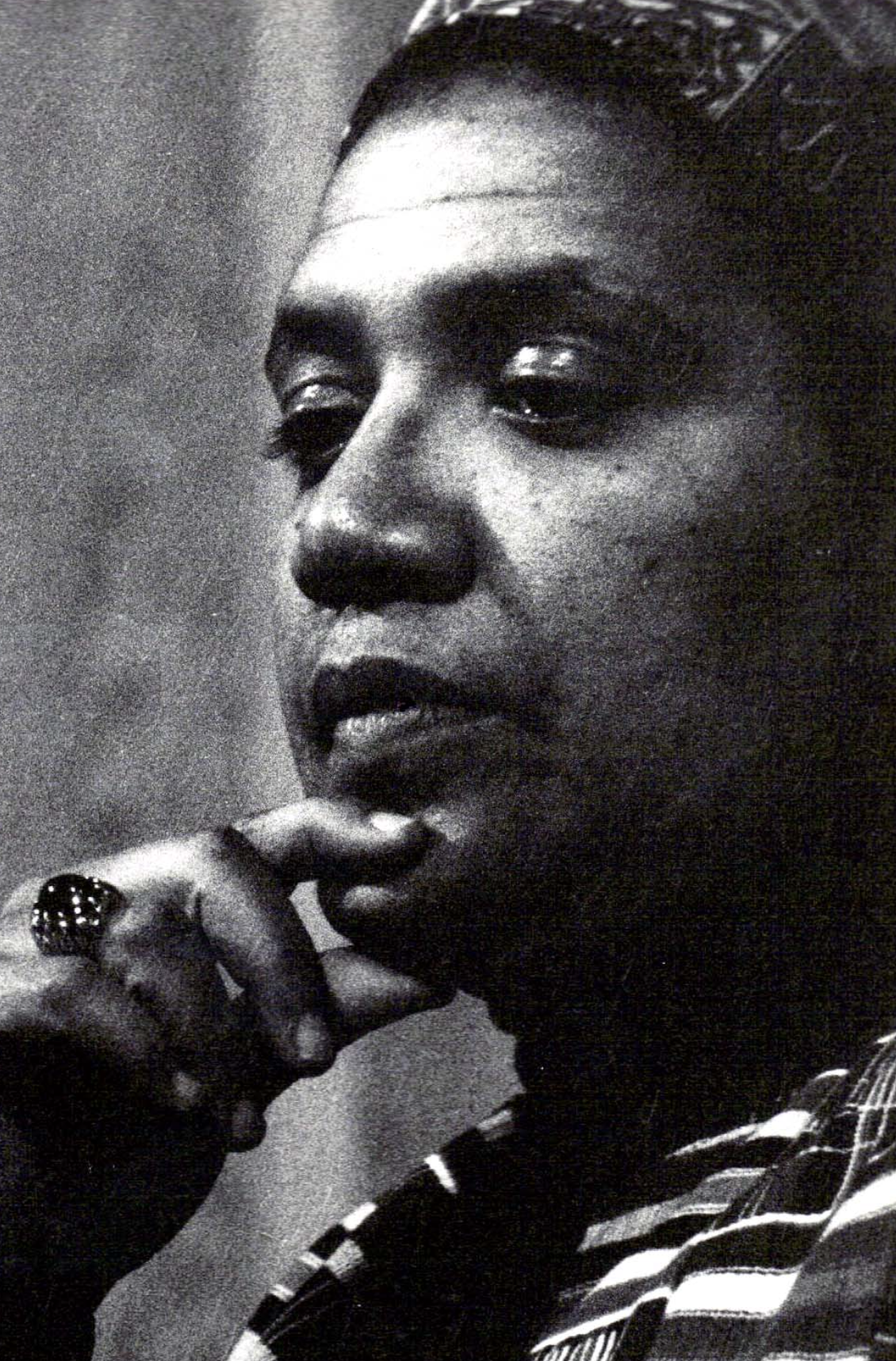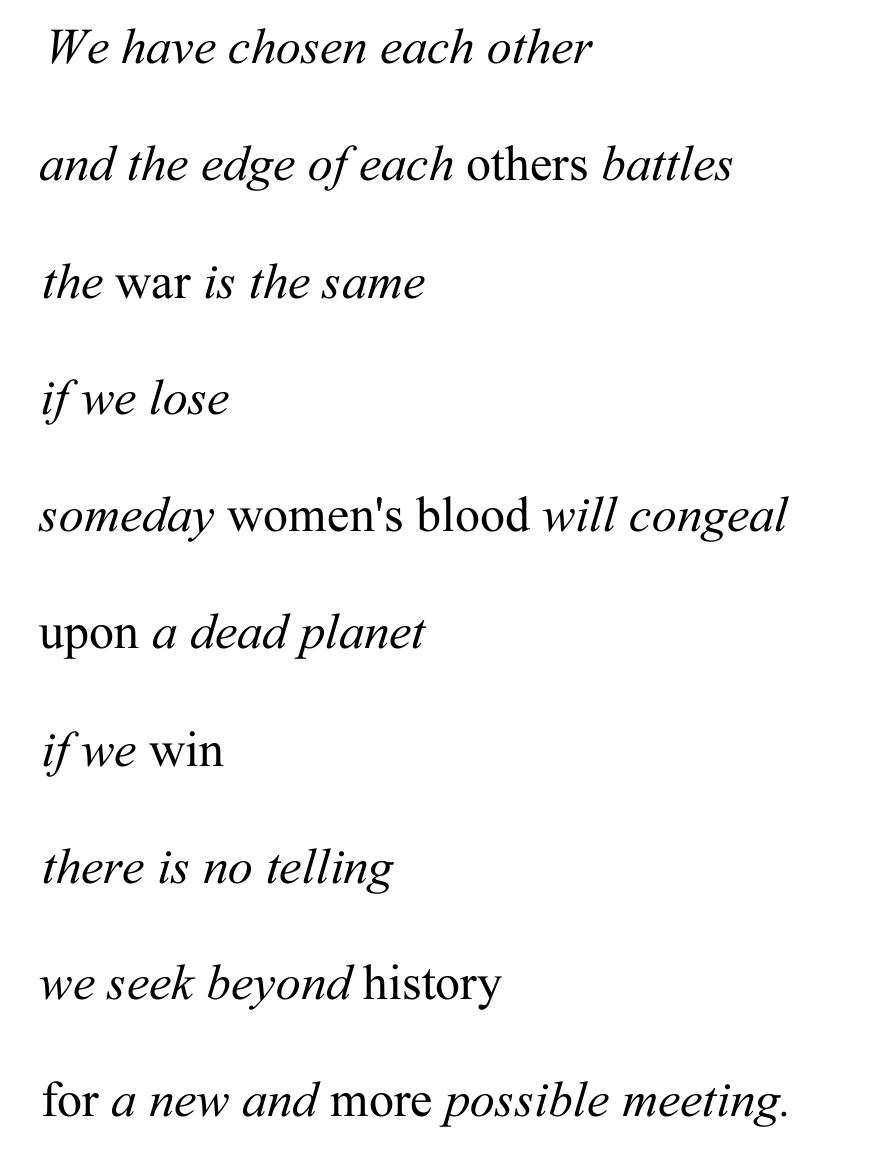“It would be advisable to think of progress in the crudest, most basic terms: that no one should go hungry anymore, that there should be no more torture, no more Auschwitz [or Gaza or Cox’s Bazar]. Only then will the idea of progress be free from lies.”
-Theodor Adorno
Critical theory, Critical Race Theory, and Critical Hydra Theory
Though I could not have described it as such, I began my journey confronting toxic othering many decades ago0. It was the mid 1970’s in a graduate level sociological theory course when I was first exposed to critical theory. Our professor was passionate about sociologists Theodore Adorno and Antonio Gramsci, both associated with the Institute for Social Research at the Goethe University in Frankfurt, Germany, founded in the early 1920’s. I too was attracted to these sociologists and the Frankfort School because I found reinforcement for my urge to understand and address social justice issues. Critical theory goes beyond ‘objective’ scholarship and aims to critique and change society, rather than merely understand or explain it. Grounded in Marxism, the Frankfort School took seriously Marx’s statement, “The philosophers have only interpreted the world in various ways; the point, however, is to change it.”
The theoretical grounding of critical Hydra theory can be linked back to the Frankfurt school, rooted in a study of
 Marx and informed by many Enlightenment thinkers who stressed equality among humans. Although critical theory can be critiqued as being Western-centric, the ideas of Gramsci, particularly his use of the idea the ‘subaltern‘ (roughly a synonym for the marginalized ‘other’) indicates that the Frankfurt school thinkers understood how to extend classic Marxism1 by systematically exploring the universality of the powerful using their influence to legitimize cultural hegemony. Though the individual thinkers using critical theory or critical Hydra theory may at times be guilty of being Western-centric, the basic tenets underlying each theory are not culture-bound.
Marx and informed by many Enlightenment thinkers who stressed equality among humans. Although critical theory can be critiqued as being Western-centric, the ideas of Gramsci, particularly his use of the idea the ‘subaltern‘ (roughly a synonym for the marginalized ‘other’) indicates that the Frankfurt school thinkers understood how to extend classic Marxism1 by systematically exploring the universality of the powerful using their influence to legitimize cultural hegemony. Though the individual thinkers using critical theory or critical Hydra theory may at times be guilty of being Western-centric, the basic tenets underlying each theory are not culture-bound.
A key fact is state societies (‘civilizations’), no matter where in the world they developed, had fundamentally the same issues with toxic othering. Once past a temporary egalitarian phase, it is universal that all ‘modern’ societies are marked by classism and soon after other ‘isms’ represented by heads of the Hydra.2
Most anthropologists now agree that socially structured inequality fueling cultural hegemony is a cultural universal among state societies. One of the main tenets of Gramsci’s use of the term subaltern is that we must listen to the voices of those who have been severely marginalized3, and these voices exist all over the world. This is a key message of those more recent proponents of critical race theory.
Critical Hydra theory addresses marginalization of the othered and employs the concept of the subaltern and the methodology of listening to the voices of the marginalized into the analysis of toxic othering as a framework of analysis addressing social injustice as it exists around the world in all modern societies. In my development of the critical Hydra theory model, I have definitely been influenced by modern critical race theorists, but the origins of my critical analysis go back to my earliest days as a thinker.
Critical theory embraces and models an intellectually omnivorous approach, listening to myriad voices within the academy -philosophers and those from all social sciences- as well non-academic voices, particularly the words of those directly impacted by socially structured inequalities and injustices. Critical theorists see the necessity to interrogate and critique the very fabric of society. My study of critical theory back in graduate school prepared me to listen to thinkers like Brazilian Paulo Freire (author of Pedagogy of the Oppressed) and American legal scholar Kimberlé Crenshaw later in my career.
The works of more modern thinkers like Audré Lorde have inspired me a great deal and serve to affirm the basic tenets proposed by Gramsci. What Lorde suggests, which is absent in both critical theory and critical race theory, is a hint at the anthropocentrism head of the Hydra, which I think is absolutely critical and is perhaps our biggest existential threat as a species now.
Seeking what they sought
I explain elsewhere in this blog [book] how the idea of the Hydra emerged in my thinking and how, over many semesters talking about and teaching ‘critical hydra theory’ (CHT), the ideas have matured and deepened. When I transitioned from talking about Hydra theory to using the phrase ‘critical Hydra theory’ I was aware that I was clearly using and extending the cache that ‘critical race theory’ (CRT) had established. I knew the name Kimberlè Crenshaw, having covered her in my sociology classes for years when discussing race and gender, and when introducing and explaining the concept of intersectionality. I knew that Professor Crenshaw had co-founded the African American Policy Forum (AAPF) and that their work clearly overlapped with what I was trying to accomplish with CHT.
Indeed, here in part is AAPF’s mission statement:
“We promote frameworks and strategies that address a vision of racial justice that embraces the intersections of race, gender, class, and the array of barriers that disempower those who are marginalized in society. AAPF is dedicated to advancing and expanding racial justice, gender equality, and the indivisibility of all human rights, both in the U.S. and internationally.”
As soon as I published Confronting Toxic Othering in late 2021, I reached out to AAPF and requested the opportunity to talk with anyone within the organization concerning our common goals and to get a reaction to my use of the phrase ‘critical Hydra theory’. I was put into contact with their CRT expert (at the time completing her dissertation examining CRT) and sent her a copy of the book. Our conversations and correspondence in the following months left me feeling supported in my work, and we agreed that we were both seeking the same thing: a world where the forces of marginalization were thoroughly interrogated and, ultimately, eradicated to the point where humans everywhere are afforded basic dignities. Now as I work on the revised edition of Confronting Toxic Othering I am finding more and more that my ideas, especially the basic tenets of CHT, are simply a restatement of what others -mostly BIPOC and those from the Global South (aka the colonized world)- have been saying for decades. Below I explore the words of one of these powerful writers, Audrè Lorde, and describe how she is part of the canon of CHT.
to talk with anyone within the organization concerning our common goals and to get a reaction to my use of the phrase ‘critical Hydra theory’. I was put into contact with their CRT expert (at the time completing her dissertation examining CRT) and sent her a copy of the book. Our conversations and correspondence in the following months left me feeling supported in my work, and we agreed that we were both seeking the same thing: a world where the forces of marginalization were thoroughly interrogated and, ultimately, eradicated to the point where humans everywhere are afforded basic dignities. Now as I work on the revised edition of Confronting Toxic Othering I am finding more and more that my ideas, especially the basic tenets of CHT, are simply a restatement of what others -mostly BIPOC and those from the Global South (aka the colonized world)- have been saying for decades. Below I explore the words of one of these powerful writers, Audrè Lorde, and describe how she is part of the canon of CHT.
Why CHT at all?
In early August of 2023 I was privileged to lead a three day workshop for humanitarian workers in Cox’s Bazar, Bangladesh. The theme for the workshop was “Social Justice in Action: Unmasking Power Dynamics in Humanitarian Response” and we used the Hydra model and CHT to talk about power dynamics affecting the 1,000,000+ Rohingya refugees residing in the world’s largest refugee camp just south of Cox’s. The participants in this workshop immediately grasped the logic behind the Hydra model, embraced the challenges of CHT, and employed this new conceptual tool with creativity and passion.
In the US context, the increasingly inclusive approach of organizations like the AAPF emphasizing the “indivisibility of all human rights” appear to hint that CHT is redundant. In non-US contexts like Bangladesh, the concept of race takes on very different nuances and talking about critical race theory infers a Western/US perspective and puts explicit emphasis on an inherently problematic race concept, i.e., on what is ultimately an artifact of Western colonialism. [See here and here for more on this idea.] In short, the value added of critical Hydra theory (CHT) is being a more internationally understood way of talking about how power and privilege have been embedded into all cultures.
Additionally, in the Western context and especially in the US, talking about Diversity, Equity, and Inclusion (DEI) and/or Diversity, Equity, Inclusion, and Justice (DEIJ) issues using the rhetoric and framework of Critical Race Theory introduces a layer of political controversy that may (at least in the short run) present challenges. Critical Hydra theory provides a framework that can offer a fresh lens for those attempting to grasp the issues underlying the myriad needs for DEI/DEIJ initiatives.
Critical Hydra theory builds on, extends, and deepens both critical theory and critical race theory, with the addition of the anthropocentrism head being the most demonstrative new dimension.
The canon inspiring Critical Hydra Theory: Karl Marx, Audrè Lorde, Paulo Friere, and others
Reflecting on the words of philosopher Basho “Do not seek to follow in the footsteps of the wise; seek what they sought”, we need to ask: what were people like Marx, the founders and followers of the Frankfurt school, and more recently activists like Paulo Freire and Audre Lorde seeking?
That the word ‘dignity’ is used in the very first sentence of the preamble to the Universal Declaration of Human Rights is significant and lies at the heart of the work of the multinational committee who authored this document. They were seeking to articulate a set of assumptions and assertions which could act as a policy roadmap for all global cultures in the aftermath of the grotesque acts of genocide and racism which had played out in Nazi Germany.
Though he devoted scant writing as to how we would get there, Marx was seeking a post-capitalist world where all humans could be free from alienation and live in a social world that encouraged and facilitated the maximization of the physical, intellectual, artistic, and spiritual potential of all humans. Founders of what is classically referred to as ‘critical theory’, the Frankfurt school cadre of thinkers including Adorno, Gramsci, Habermas, Marcuse and others sought to encourage and model the critiquing of societal structures, ideologies, and power dynamics at the root of much human misery. They were motivated by the hope that through the use of critical theory the pursuit of social justice and human liberation could be broadly embraced and lead to an inclusive, humane world for all humans.
Though not formally part of the Frankfurt school, thinkers like Edward Said (Orientalism) and Frantz Fanon (“Black Skin, White Masks” and “The Wretched of the Earth”) have significantly influenced Critical Hydra Theory within the broader Critical Theory tradition, addressing issues of othering, colonialism, racism, and decolonization. Said and Fanon were seeking a world where the interrogation of colonialism bore the positive fruit of understanding and then dismantling the lasting impacts of oppressive colonial structures.

Both Freire and Lorde make the same two points. First, echoing Fanon’s observation about the colonized adopting the perspectives and actions of the colonizers, they point out that virtually everyone is simultaneously both the oppressed and the oppressor. Here is how Lorde puts it in her seminal essay “Age, Race, Class and Sex: Women Redefining Difference”
“But our future survival is predicated upon our ability to relate within equality. As women, we must root out internalized patterns of oppression within ourselves if we are to move beyond the most superficial aspects of social change. … For we have, built into all of us, old blueprints of expectation and response, old structures of oppression, and these must be altered at the same time as we alter the living conditions which are a result of those structures.”
She then goes on to invoke Freire,
“As Paulo Freire shows so well in The Pedagogy of the Oppressed, the true focus of revolutionary change is never merely the oppressive situations which we seek to escape, but that piece of the oppressor which is planted deep within each of us…”
Lorde also says clearly that all forms of oppression share a common twisted logic, that:
“Racism, the belief in the inherent superiority of one race over all others and thereby the right to dominance. Sexism, the belief in the inherent superiority of one sex over the other and thereby the right to dominance. Ageism. Heterosexism. Elitism. Classism.”
A second point made by both thinkers is captured by the title of one of Lorde’s most dramatic pieces of work, namely “There Is No Hierarchy Of Oppressions“. She says,
“Within the lesbian community I am Black, and within the Black community I am a lesbian. Any attack against Black people is a lesbian and gay issue, because I and thousands of other Black women are part of the lesbian community. Any attack against lesbians and gays is a Black issue, because thousands of lesbians and gay men are Black.”
This indeed is a main tenet and goal of critical Hydra theory, that all the heads of the Hydra must be recognized as different avatars of toxic othering sharing the same body, their origin and impacts interrogated, and their heads transformed from devouring monsters to benign faces representing human diversity.
 Lorde hints at one of the main differences between classical critical theory, CRT and CHT; she anticipates the anthropocentrism head of the Hydra. She warns in the poem that appears at the end of “Age, Race, Class and Sex: Women Redefining Difference” that unless we enact radical cultural change “someday women’s blood will congeal/upon a dead planet”.
Lorde hints at one of the main differences between classical critical theory, CRT and CHT; she anticipates the anthropocentrism head of the Hydra. She warns in the poem that appears at the end of “Age, Race, Class and Sex: Women Redefining Difference” that unless we enact radical cultural change “someday women’s blood will congeal/upon a dead planet”.
Her reference to a ‘dead planet’ can be taken to mean she saw our human tendency to oppress included our oppression of other life forms on the planet, an idea that was increasingly current in her time and is certainly well understood by many today.
She ends the poem with an optimistic vision, offering that if we win,
“there is no telling
we seek beyond history
for a new and more possible meeting.”
Indeed, in that poem she summarizes the hopes of critical theory, critical race theory, and critical Hydra theory, namely that through our agency both individually and collectively we can create a more just world for all. As Theodor Adorno puts it, “Only then will the idea of progress be free from lies.”
Final thoughts
Confronting the endemic toxic othering at the root of all social problems is a quest common to all who seek a more just world, and the Hydra model is a powerful tool able to be employed in this perhaps Sisyphean task. Critical Hydra theory is an offering to those who see themselves as agents of social change, a new twist on an old set of ideas and motivations. For as long as there have been humans there have been those who recognized injustice and toxic othering, one group feeling and acting ‘superior’ to another. I believe that just like intelligence or height which exist on a bell curve in human populations, empathy is a trait that also is much more pronounced in some more than others. Eradicating injustices is a goal that has motivated many empathy enhanced4 social philosophers, poets, and activists across the globe throughout our troubled history as a species. The rich tapestry of their many voices comes from all periods of human history and from all corners of our world. The tool of critical Hydra theory is just one more arrow in the quiver of the most recent generation of social justice warriors who seek a world ‘beyond history.’5
Notes
0Here is what I wrote in 1980 anticipating my career as a humanist and social justice seeker.
1In his 1846 work The German Ideology Marx says, “The ideas of the ruling class are in every epoch the ruling ideas; i.e., the class which is the ruling material force in society is at the same time the ruling intellectual force” and lays the groundwork for the somewhat more inclusive concept of cultural hegemony.
2See Peter Tuchin’s Ultrasociety (2016) for a detailed argument that although stratified state societies are an inevitability humanity is moving toward a world with less structural inequality.
3In her book Can the Subaltern Speak? Indian feminist Gayatri Spivak posits that subaltern voices are muted, diverse, and expressed in a manner hard to process by many who seek to listen, mostly critical academics. Beginning in the 1980’s those such as Spivak working in Subaltern Studies have addressed the methodological and ethical issues of mitigating the inherent bias of the colonial/Western perspective as subaltern voices are heard.
4In my theory class I talk about how Marx imagined a post-capitalism world where humans would live ‘from each according to their ability, to each according to their need’, and where all human potential would be realized and dignity would be afforded to all. I think Lorde shared this vision.
5These individuals are typically at odds with those individuals who are ‘authoritarian enhanced’. Perhaps this is one way of talking about the classic battle between good and evil in all human populations: the empaths versus the authoritarians.


 Follow
Follow